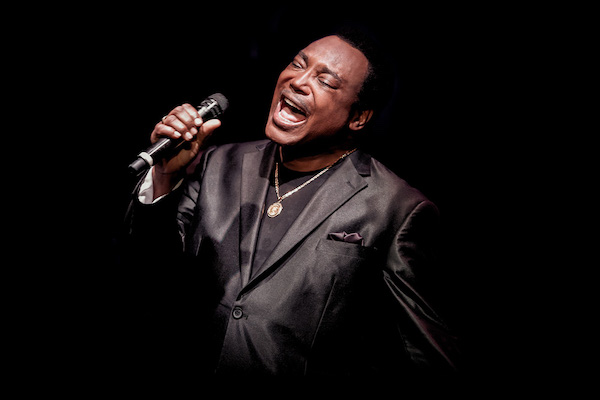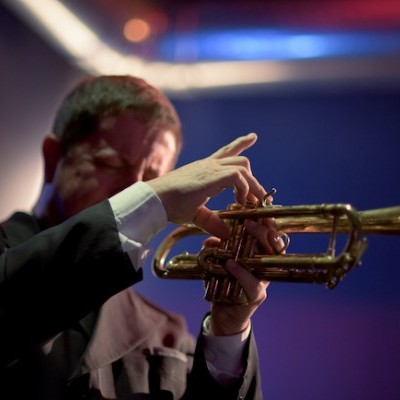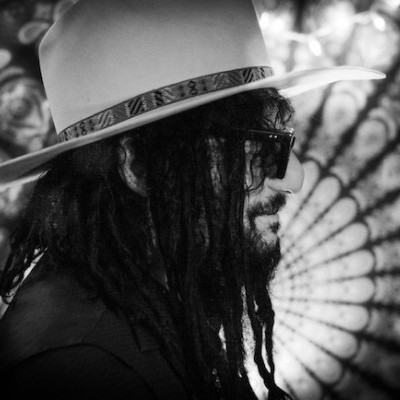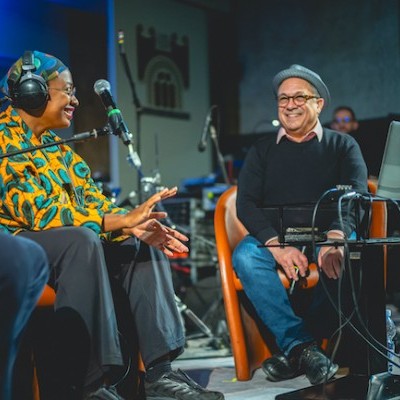Jul 9, 2024 11:35 AM
Trumpeter, Educator Jim Rotondi Dies at 61
Jim Rotondi, a renowned hard-bop trumpeter, composer and educator, died suddenly on July 7 at a hospital in France. He…

George Benson’s latest album was recorded live at Ronnie Scott’s in London.
(Photo: Carl Hyde)As an 8-year-old busker, George Benson boasted a big voice and a broken-down ukulele that he wielded with prodigious skill. By all accounts, his act was something of a spectacle on the streets of postwar Pittsburgh.
So, it was no surprise that when word of the child prodigy reached singer Eddie Jefferson—like Benson, a Pittsburgh native—the pioneer of jazz vocalese was compelled to go see the kid. Jefferson was both impressed and amused. “He and a friend both fell on the ground laughing when they heard me singing one of his songs,” Benson recalled during a September phone call with DownBeat.
Despite his current status as a global superstar, Benson, 77, has never forgotten those early days. On a July night in 2019 at Ronnie Scott’s in London, he performed the tune that made Jefferson famous—“Moody’s Mood For Love”—deftly massaging the words crafted for saxophonist James Moody’s solo. The interpretation, documented on Benson’s latest album, Weekend In London (Provogue), is at once a tribute to his own gifts and an homage to his predecessor’s.
“Eddie Jefferson was gigantic to me because he was an innovator,” Benson said.
The guitarist’s own status as a jazz innovator has sometimes been obscured by his success in generating pop hits, some of which—notably “Give Me The Night,” the title track from a 1980 album produced by Quincy Jones—appear in live versions on Weekend In London. But the many honors he has garnered—among them a 2009 NEA Jazz Masters fellowship, 10 Grammy awards and his induction, via the 2020 Readers Poll, into the DownBeat Hall of Fame—attest to his standing as a creative force.
So, too, does the praise of a multigenerational cohort of colleagues. John Scofield, 68, said he was first dazzled by Benson on hearing his second and third albums, It’s Uptown (1966) and The George Benson Cookbook (1967). Produced by John Hammond for Columbia Records, the recordings showcase Benson’s fleet fingers in the familiar setting of an organ combo. Scofield said he was so taken by the albums that as a freshman at Berklee in 1970, he made sure to catch Benson’s gig at the Boston club The Jazz Workshop.
“It blew my mind,” he recalled. “I’ve been a fan ever since.”
Laughingly admitting to stealing licks from Benson, Scofield said it was the fluidity of his articulation that was most impressive: “He has this technical thing he can do on the guitar where he plays something nobody else can play. There are only a couple of guys like that in the history of jazz guitar. Django Reinhardt and Wes Montgomery come to mind—and George.

Jim Rotondi was acclaimed for his wide, round trumpet tone, remarkable virtuosity and assured swing.
Jul 9, 2024 11:35 AM
Jim Rotondi, a renowned hard-bop trumpeter, composer and educator, died suddenly on July 7 at a hospital in France. He…

Charles Lloyd, seen here at the 2024 New Orleans Jazz & Heritage Festival, makes DownBeat Poll history!
Jul 11, 2024 12:23 PM
The incomparable Charles Lloyd swept the 72nd Annual DownBeat Critics Poll, becoming the first artist ever to earn…

“Being president of Blue Note has been one of the coolest things that ever happened to me,” Was said. “It’s a gas to serve as one of the caretakers of that legacy.”
Jun 4, 2024 12:21 PM
Sitting with Don Was is a comfortable and unhurried exercise. He may seem slightly reserved at first, but ideas and…

“She reminds me of my childhood and makes we want to cry,” Cécile McLorin Salvant, pictured here with writer Ashley Kahn, said of Dianne Reeves.
Jun 11, 2024 12:31 PM
Italy’s Umbria Jazz Winter is one of those rare annual festivals that not only coincides with a major holiday —…

Maria Schneider said of Decades, her new compilation release: “I just wanted to create something, put it in a beautiful box and say, ‘Look at what we did.‘”
Jun 18, 2024 12:00 PM
Maria Schneider opened the sleek black box and placed it on a coffee table in her Manhattan apartment. Inside lay the…